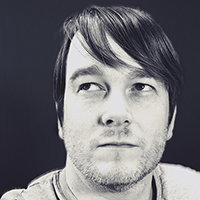Finding the right granularity in your Zettelkasten notes

I’ve been getting questions lately about how to find the right granularity for permanent notes and Maps of Content when using the Zettelkasten method. I recently answered this in a comment on one of my YouTube videos, and I think it’s worth sharing here as a blog post.
How detailed should your permanent notes be?
When it comes to how detailed your permanent notes should be, it really comes down to personal preference. Let’s say you’re writing an article about bootstrapping a business. Should you create one comprehensive permanent note about bootstrapping which sits as a sub-topic of entrepreneurship—or should you break it down into smaller, more focused notes?
Personally, I find having smaller and more focused notes helps with your ability to reason about the topic much easier. You might think that a single long note might feel right at first, but breaking it down into smaller pieces can offer some long-term benefits when it comes to reasoning about, updating and linking notes to create unique insights. For example, instead of one long note titled “Bootstrapping a Business,” you could break it into a collection of smaller atomic notes, such as:
• What bootstrapping means
• The benefits of bootstrapping
• When to consider bootstrapping your business
• The potential challenges of bootstrapping your business
• How to bootstrap with limited resources
Breaking these ideas down into their own individual notes, it makes it easier for you to clearly explain it and connect it to your own unique insights. A note on “Challenges of Bootstrapping,” for example, might link to others about “Time Management” or “Resource Management.” It’s about building a web of ideas instead of a stack of documents.
Why smaller notes matter
Having smaller, focused permanent notes (Atomic Notes) makes creating a robust Map of Content (MoC) much easier. Imagine you’re mapping out “Bootstrapping a Business,” and you have distinct notes that allow you to easily visualise how each aspect relates. In contrast, a single, lengthy note will be harder to dissect when you’re trying to create a broader MoC around something like “Entrepreneurship.”
Over time your understanding will evolve. Having to update long notes for this is much harder than having a handful of small atomically written notes. The more specific your notes are, the easier it is to connect them to other concepts.
What about fleeting notes, should you keep them?
This is another question that comes up often. Fleeting notes are quick, disposable captures of what you're learning, often as a bullet point list. They serve as a way to jot down the key points from lectures, books, or videos before refining them into literature, and then permanent notes. I used to think that they were disposable, but now I see the value in keeping them around.
Why? They can act as a great audit trail, especially if you need to cite your references when publishing your own work. They help you trace back to the original source of where your ideas came from. For instance, you might take a bullet point from a fleeting note and turn it into a more fleshed-out literature note as it's own atomically written note. This helps you refine your understanding of what the original material was saying.
That literature note could then evolve into a permanent note linking to other parts of your Zettelkasten as you start to reflect on it's impact on the wider body of knowledge you have. By keep the fleeting note, you maintain a connection to the original material.
This can be super helpful when you’re writing and want to cite a specific idea. With an audit trail that leads from a permanent note to a literature note to a fleeting note, you have a clear path back to where your thoughts originated.
As you evolve your permanent notes and add new sources that change your thinking, you can continue to add the literature notes that contribute to this change. Those literature notes in turn link back to the fleeting notes, which links back to the original material.
Wrapping up
It take a bit of practice to find right level of detail for your permanent notes and how to organise them in your Maps of Content. But I’ve found that breaking things down into smaller, more focused notes can really pay off in the long run. By keeping fleeting notes, you track the origins of your ideas, creating a better and more accurate knowledge system.
If you want to go deepen your learning on these concepts, I cover this in great detail in my book, Atomic Note-Taking. And if you have any questions or just want to chat about what you're learning, feel free to join me on my Discord server.

